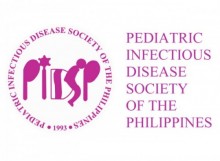Clinical and Microbiological Profile and Factors Affecting Outcome among Pediatric Febrile Neutropenic Patients with Hematologic Malignancies
Josh Nathan L. Ngai, M.D., Kristian Dorell T. Masacupan, M.D., Allan Robert R. Racho, M.D., Maria Luz U. Del Rosario, M.D., Loralyn Mae O. Lagaya-Arañas, M.D., Imelda A. Luna, M.D.
ABSTRACT
Objective: To evaluate the clinical and microbiological profile and factors affecting outcome among pediatric febrile neutropenic (FN) patients with hematologic malignancies (HM)
Methodology: This was a cross-sectional study which looked into medical records of Filipino children 0-18years old diagnosed with FN and HM and admitted from June 2016 up to June 2022 at the St. Luke’s Medical Center, Quezon City (SLMC-QC). Data on age, sex, underlying malignancy, stage of treatment, site of infection, presence of central line, initial antibiotic therapy, culture positivity and isolates were retrospectively evaluated. Incomplete records were excluded. The relationship between clinical & microbiologic profile and outcomes were analyzed using T-test and Chi-square test. Significance was set at p<0.05.
Results: This study included 267 episodes of FN. Patients had a mean age of 8.3 years with male preponderance (59%). The most frequent underlying malignancy was acute lymphoblastic leukemia (61%). Episodes occurred primarily during the induction (40%) and consolidation phases (28%) of chemotherapy. Most (65%) had an absolute neutrophil count (ANC) of <100/mm3 . Central line catheter was present in 59% of episodes and 52% had an implanted port. There was no identifiable focus of infection in 52% of cases. Gram-negative bacteria, specifically Klebsiella pneumoniae (13%) and Escherichia coli (11%) were the most common isolates. Most patients (88%) recovered. Age >10years, male sex, diagnosis of acute myelogenous leukemia, relapse disease, ANC <100/mm3 , presence of a central line, and central line associated bloodstream infection were significantly associated with duration of hospital stay. Presence of central venous line was the most significant factor associated with mortality. Conclusions: Several clinical and microbiological factors, specifically age >10years, male sex, diagnosis of acute myelogenous leukemia, relapse disease, ANC <100/mm3 , presence of a central line, and central line associated bloodstream infection, were documented to significantly affect outcome in Filipino pediatric FN patients with HM.
Keywords: Pediatric, Febrile Neutropenia, Hematologic Malignancies, Leukemia, Philippines
https://doi.org/10.56964/pidspj20232402004
| View Full Article in PDF format |
